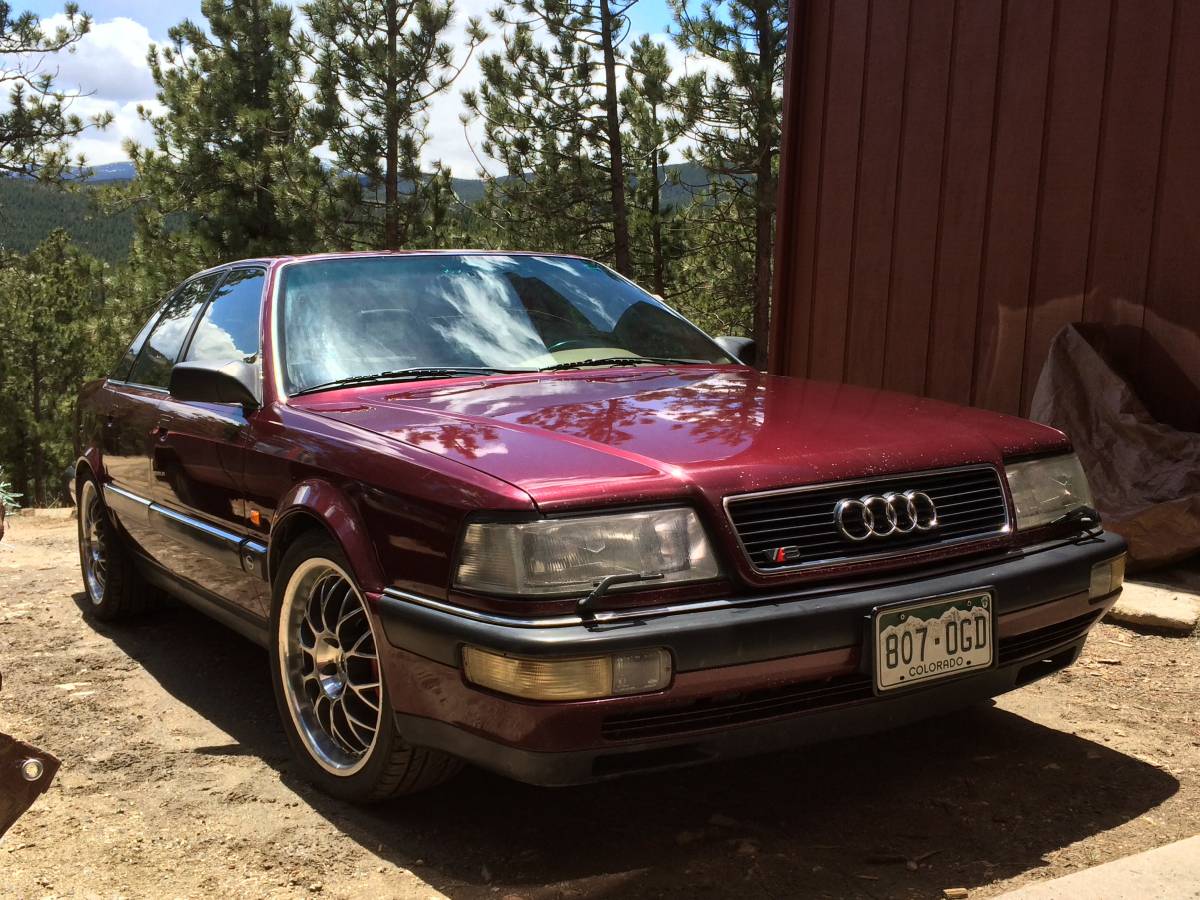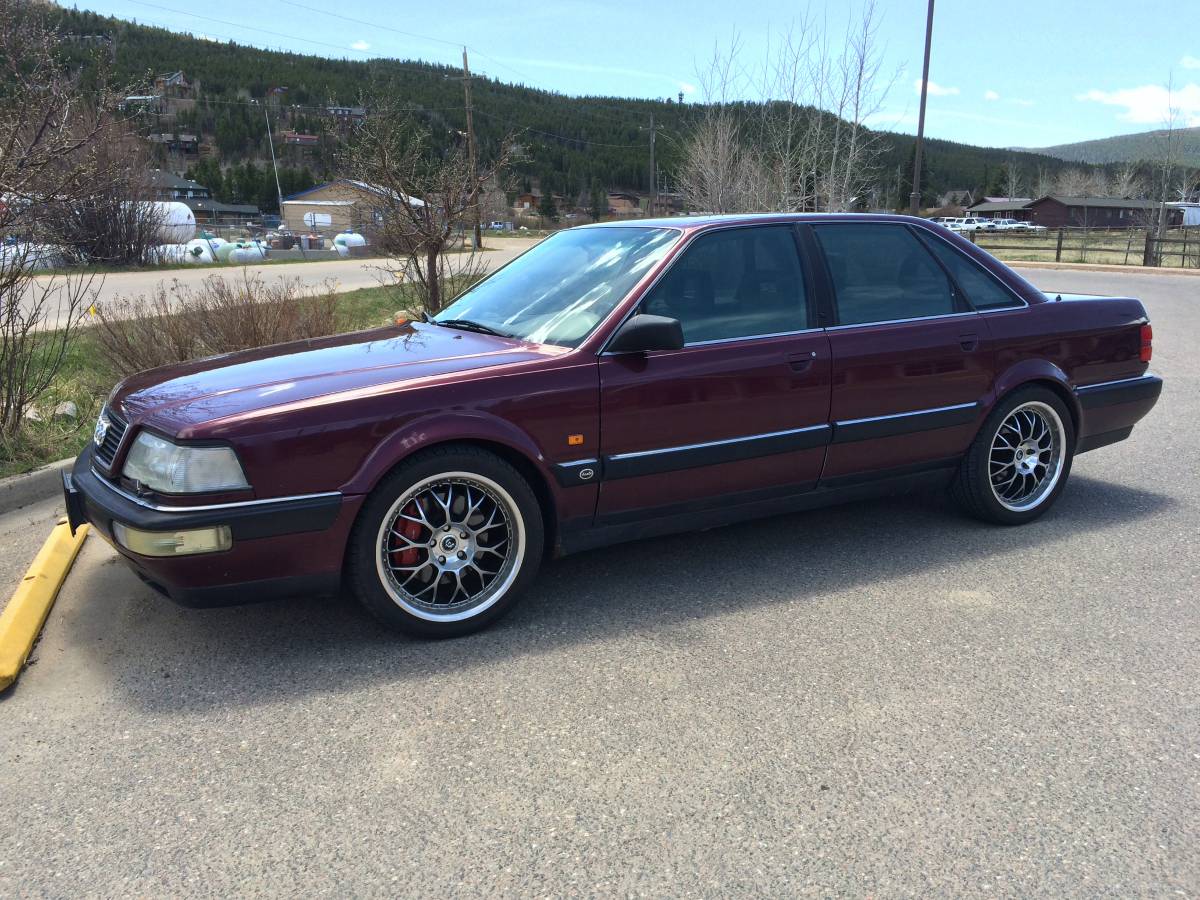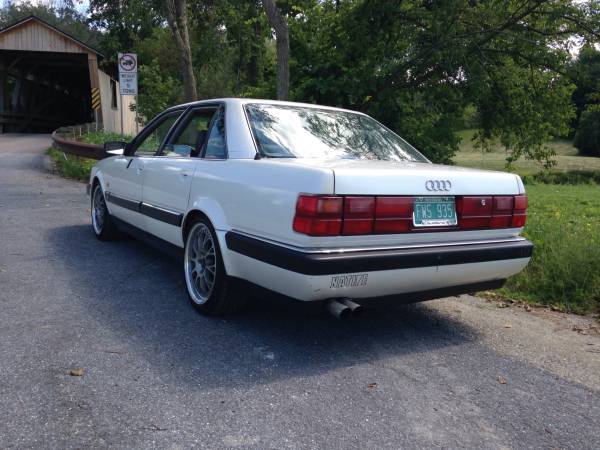Though we’ve had a nice string of older Audis, it’s been a while since we’ve looked at a V8 quattro – but today’s is pretty special. First off, it’s one of the later 4.2 models. These cars were upgraded with a transmission cooler to help solve the early model automatic transmission failures. That, of course, meant all U.S. bound 4.2s were automatics from the factory. While that may sound like a downer, the 4-speed auto wasn’t a bad transmission and linked to the 276 horsepower, all-aluminum 4 cam V8 in front, motivation was never really an issue. Dynamically, these V8 quattros were also much better on the fly than the nose-heavy inline-5s, too. Not only was the engine a bit farther back, but the Torsen differential in the rear helped to give these cars a better power distribution. Of course, the cream of the crop were the 3.6 5-speed manuals – the only Torsen center, Torsen rear differential car Audi ever produced. Mate one with a 4.2 in a perfect color combination, sprinkle in some sport seats, and you have one pretty desirable package:
Tag: D11
Much as the Quattro set the trend for performance turbocharged all-wheel drive coupes in the 1980s, Audi launched another trend-setter in 1988. The V8 quattro was not an all-new design; it borrowed heavily from the Type 44 200 chassis, but several revisions completely redefined the character of Audi’s flagship. First was the motor, an all-aluminum quad cam V8 coded PT displaced 3.6 liters initially. If you thought it was effectively two Volkswagen 16V motors sandwiched together, you thought correctly – Audi mimicked what Porsche had done with the 944/928 motor designs. With 240 horsepower, the new V8 offered about a 20% boost in power over the 10V turbo motors that were in the European 200s. But the real innovation wasn’t the motor – it was the automatic transmission. Combining a multi-plate clutch center differential and an all-new Torsen rear differential, the V8 quattro drove decidedly quite differently than the inline-5 variants. Weight, while not down thanks to a host of luxury items, was moved backwards and the V8 was more balanced and less prone to understeer than the turbos were. Additionally, the torque was near instant. But by 1991, the gap between the now 20V variant of the 200 and the V8 was so narrow that Audi upped the displacement. The new ABH V8 upped the power to 276 horsepower and 296 lb.ft of torque. Outside, subtle changes helped to distinguish the luxury variant after Audi’s brief foray into absolutely no badging from 1990-1991. Now with small “V8” monikers front and rear, along with a small “quattro” script, the performance was quite a bit improved over the earlier car. Additionally, there were small changes to the 4.2 model – such as some new colors, a transmission cooler and a mildly revised cockpit featuring the updated climate control. But outside remained effectively unchanged, as the 4.2 wore the same forged BBS RG wheels that the 1991 3.6 V8s had. What was always a bit special was the presentation of the V8 quattro – low, hunkered down and widened over the normal slab-sided 200, the headlights and hood treatment hinted at the revised Audi design language that would carry through to the mid-2000s. Plus, the V8 quattro sported some awesome flares to pull it all together. If you like cars such as the 500E and 540i, you can thank the V8 quattro for establishing the benchmark for them. Yet considered over-complicated and prone to mechanical failure, few of these pioneering luxury Autobahn cruisers survive in the U.S. today:
CLICK FOR DETAILS: 1993 Audi V8 quattro on New Hampshire Craigslist
11 CommentsFor the best part of two decades, Audi’s signature color was one of its most expensive options. On some models, in fact, Pearlescent White Metallic was the only optional extra you could select. From the original Quattro to the top tier S8, Audi bathed its most expensive models in the multi-stage dynamic paint color. As with most used older Audis, they’re all fairly affordable and offer – generally each in their own way – good value for the initial investment they represent. If you want to maximize the amount of German car you get for your money, look no further. Today I’ve arranged to look at a series of them, ranging from nearly the beginning to the end of the run. Which is your favorite and why?









